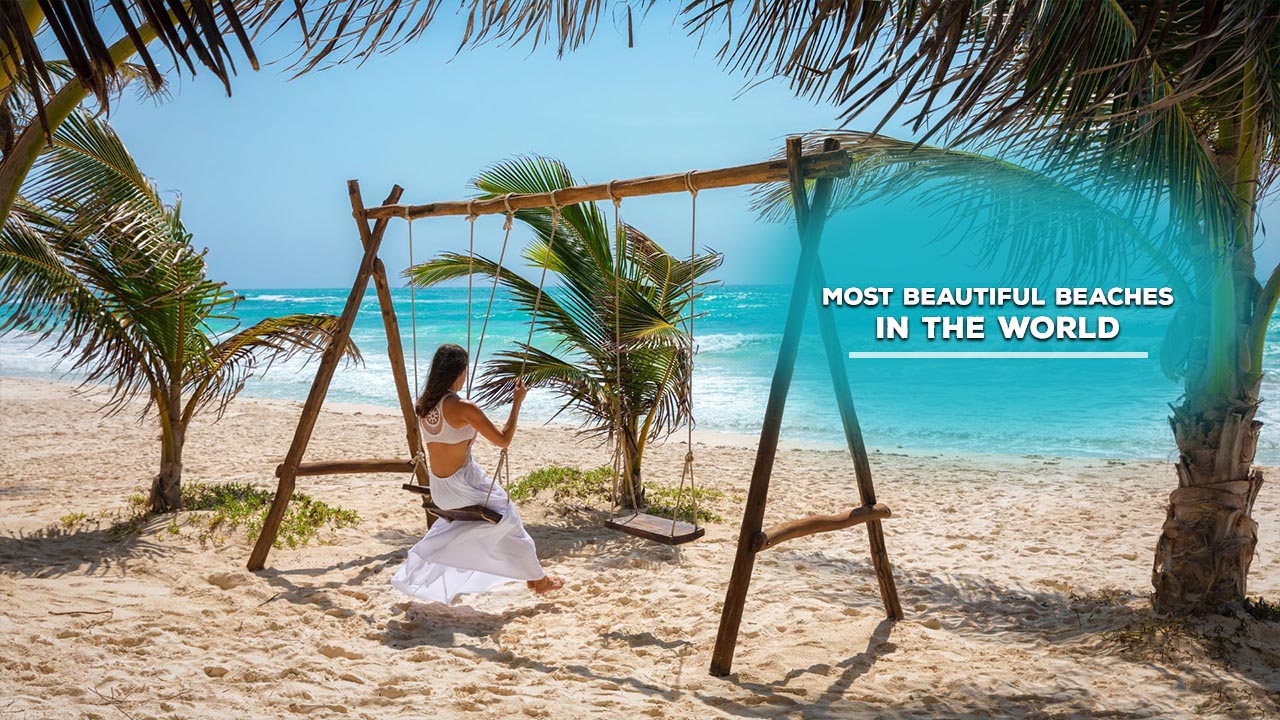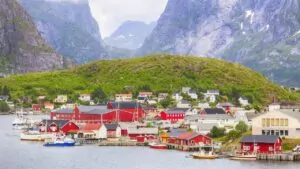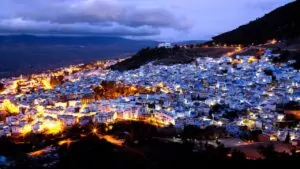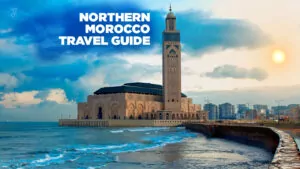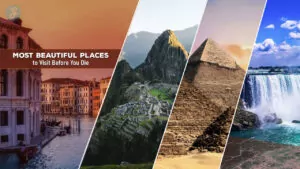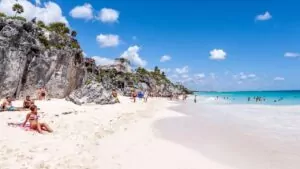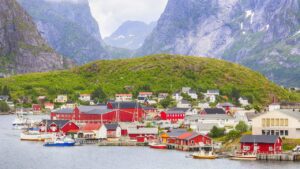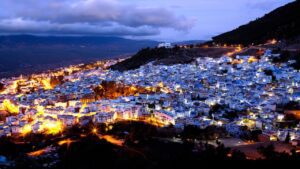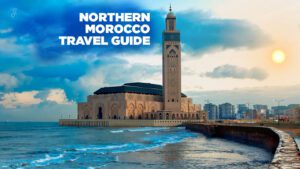Beaches are nature’s playground, where land meets sea in a stunning display of beauty and tranquility. From powdery white sands to crystal-clear waters, the world’s most beautiful beaches offer a slice of paradise for travelers and beach lovers alike. In this article, we’ll take you on a journey to 20 of the most breathtaking shorelines across the globe, each with its own unique charm and allure.
These coastal gems span continents and climates, from tropical islands to rugged coastlines. We’ll explore their natural wonders, local cultures, and what makes each one stand out as a top beach destination. Whether you’re planning your next vacation or just dreaming of far-off shores, join us as we dive into the world’s most beautiful beaches.
1. Anse Source d’Argent, Seychelles
Anse Source d’Argent, located on La Digue Island in the Seychelles, is a beach that seems almost too perfect to be real. Its enormous, weather-sculpted granite boulders create a dramatic contrast against the soft pink sand and turquoise waters.
Key features:
- Pink-tinged sand due to crushed coral
- Massive granite rock formations
- Shallow, calm waters perfect for swimming and snorkeling
The beach’s unique landscape has made it a favorite among photographers and filmmakers. In fact, it has been featured in numerous commercials and films, including the Tom Hanks movie “Castaway.”
The pink hue of the sand comes from tiny fragments of coral mixed with the white sand. This, combined with the giant granite boulders, creates a color palette that changes throughout the day as the sun moves across the sky.
The beach is sheltered by a coral reef, making the water calm and ideal for families and less confident swimmers. The reef also provides excellent snorkeling opportunities, with a variety of tropical fish and sea turtles often spotted in the area.
The surrounding area is rich in wildlife. Giant Aldabra tortoises, some over a hundred years old, can sometimes be seen near the shore. The nearby L’Union Estate coconut plantation offers a glimpse into the island’s history and traditional copra production methods.
Access to the beach is through the L’Union Estate, which charges an entrance fee. This helps to limit crowds and preserve the beach’s pristine condition. Visitors should bring their own food and drinks, as there are no facilities on the beach itself.
Best time to visit: April to May and October to November, when the weather is most stable and the tourist crowds are thinner. During these months, the temperature averages around 27°C (80°F), and the sea is calm and clear.
Insider tip: Visit in the late afternoon when most day-trippers have left. You’ll have a better chance of having this slice of paradise to yourself, and the golden hour light makes for stunning photographs.
2. Whitehaven Beach, Australia
Whitehaven Beach, stretching over 7 kilometers (4.3 miles) along Whitsunday Island, is the jewel of Queensland’s coast. Its most striking feature is its sand, which is 98% pure silica, giving it a brilliant white color that’s dazzling to behold.
Key features:
- Swirling patterns of white sand and turquoise water at Hill Inlet
- Some of the purest sand in the world
- Accessible only by boat, seaplane, or helicopter
The sand on Whitehaven Beach is so fine that it can damage electronic equipment, so visitors are advised to keep their devices safely stored. The sand doesn’t retain heat, making it comfortable to walk on even on the hottest days.
Hill Inlet, at the northern end of the beach, is a must-see attraction. As the tide shifts, it creates a stunning swirling fusion of white sand and turquoise water. The best view of this natural wonder is from the lookout at Tongue Point.
The beach is part of the Whitsunday Islands National Park, which helps preserve its unspoiled beauty. The surrounding waters are home to an array of marine life, including sea turtles, dugongs, and various fish species.
For those seeking adventure, Whitehaven Beach offers excellent bushwalking opportunities. The Whitehaven Beach and Hill Inlet Lookout trail is a moderate 5km return walk that offers breathtaking views of the beach and surrounding Whitsunday Islands.
While there are no permanent structures on the beach to preserve its natural state, there are basic facilities for day visitors, including composting toilets and picnic areas.
Best time to visit: September to November, when temperatures are comfortable (averaging around 26°C or 79°F) and rainfall is low. This is also the time when you’re most likely to spot migrating humpback whales in the surrounding waters.
Insider tip: If possible, time your visit with low tide at Hill Inlet. This is when the swirling sand patterns are most visible and spectacular.
3. Navagio Beach (Shipwreck Beach), Greece
Navagio Beach, also known as Shipwreck Beach or Smugglers Cove, is a exposed cove on the coast of Zakynthos, Greece. Its claim to fame is the picturesque shipwreck that rests directly on the beach, creating one of the most photographed landscapes in Greece.
Key features:
- Iconic shipwreck on the beach
- Accessible only by boat
- Crystal-clear blue waters are perfect for swimming
The shipwreck is that of the MV Panagiotis, which ran aground in 1980. According to local lore, the ship was smuggling cigarettes and was pursued by the Greek Navy before it ran aground in bad weather. Today, the rusting hull of the ship creates a striking contrast against the white pebble beach and towering limestone cliffs.
The beach is surrounded by sheer limestone cliffs reaching heights of up to 200 meters (656 feet), adding to its secluded and dramatic atmosphere. These cliffs are popular among base jumpers, though this activity is strictly regulated for safety reasons.
The water at Navagio Beach is a mesmerizing shade of turquoise that seems almost too vivid to be real. The depth of the water changes abruptly, creating bands of color ranging from pale aquamarine to deep blue. The water is crystal clear, offering excellent visibility for swimming and snorkeling.
While the beach itself is pebbly rather than sandy, the smooth white stones create a beautiful shoreline. Visitors should bring appropriate footwear and beach mats for comfort.
Access to the beach is only possible by boat, with tours departing regularly from nearby ports like Agios Nikolaos, Porto Vromi, and Zakynthos Town. Most boat trips include time for swimming and exploring the beach.
For those who prefer to admire the view from above, there’s a viewing platform on the cliffs overlooking the beach. This spot offers a panoramic view that’s popular for photography, especially during sunset.
Best time to visit: late May to early October for warm weather and calm seas. The average temperature during this period ranges from 24°C to 28°C (75°F to 82°F). Early morning or late afternoon visits can help avoid the midday crowds.
Insider tip: If you’re visiting the viewing platform, be prepared for a bit of a walk and bring water. The path to the best viewpoints can be hot and exposed, but the view is well worth the effort.
4. Baia do Sancho, Brazil
Baia do Sancho, located on the remote island of Fernando de Noronha off Brazil’s northeast coast, is consistently ranked as one of the world’s best beaches. This crescent-shaped beach is a testament to nature’s unspoiled beauty, framed by verdant cliffs and washed by crystal-clear waters teeming with marine life.
Key features:
- Rich biodiversity both on land and in the water
- Challenging access via ladders through rock crevices
- Excellent snorkeling and diving opportunities
The beach is part of the Fernando de Noronha Marine National Park, a UNESCO World Heritage site known for its rich biodiversity. The park’s strict conservation measures help maintain the pristine condition of the beach and its surrounding ecosystem.
Access to Baia do Sancho is an adventure in itself. Visitors must descend a series of steep ladders through narrow crevices in the cliff face to reach the beach. While challenging, this unique entrance adds to the sense of discovery and seclusion upon reaching the shore.
The waters around Baia do Sancho are exceptionally clear, with visibility often exceeding 30 meters (100 feet). This clarity, combined with the abundance of marine life, makes it a paradise for snorkelers and divers. Visitors can spot sea turtles, rays, and a variety of colorful tropical fish species in the turquoise waters.
The beach is flanked by towering cliffs covered in lush Atlantic Forest vegetation, providing a dramatic backdrop and natural shade. These cliffs are home to various bird species, including the endemic Noronha Elaenia.
Due to its isolated location and the island’s visitor restrictions (only 420 tourists are allowed on Fernando de Noronha at any given time), Baia do Sancho rarely feels crowded. This helps preserve its tranquil atmosphere and unspoiled beauty.
There are no permanent structures on the beach to maintain its natural state. Visitors should bring their own supplies, including water and snacks. It’s important to note that there are no bathroom facilities on the beach itself.
Best time to visit: September to March for the best weather conditions. During this period, temperatures average around 28°C (82°F), and the seas are calmer. The driest months are September to November, which can be ideal for clearer underwater visibility.
Insider tip: Visit early in the morning or late in the afternoon to avoid the midday heat and have a better chance of spotting wildlife. If you’re an avid snorkeler or diver, consider booking a boat tour to explore the surrounding waters more extensively.
5. Pink Sands Beach, Bahamas
Pink Sands Beach on Harbour Island in the Bahamas is a 5-kilometer (3-mile) stretch of coastline that seems almost too picturesque to be real. As its name suggests, this beach is famous for its pale pink sand, creating a dreamlike landscape against the turquoise Caribbean waters.
Key features:
- 5 kilometers (3 miles) of pink-tinted sand
- Calm waters protected by an offshore reef
- Luxurious resorts and quaint cottages along the beach
The unique pink hue of the sand comes from microscopic coral insects called foraminifera. These tiny creatures have bright pink or red shells, which mix with the white sand to create the beach’s distinctive color. The pink is most visible when the sand is wet or during the softer light of sunrise and sunset.
The beach is protected by an offshore reef that runs parallel to the shore, creating calm, shallow waters perfect for swimming and snorkeling. This reef also provides a habitat for a variety of marine life, including colorful tropical fish and occasionally sea turtles.
Harbour Island, often called “Briland” by locals, is known for its laid-back luxury. The island has managed to maintain its old-world charm while offering high-end amenities. Along Pink Sands Beach, visitors can find a mix of luxurious resorts and quaint cottages, many featuring the pastel-colored architecture typical of the Bahamas.
Water activities are abundant at Pink Sands Beach. In addition to swimming and snorkeling, visitors can enjoy kayaking, paddleboarding, and sailing. For those who prefer to stay on land, horseback riding along the beach is a popular activity, especially during sunrise or sunset.
The western side of the beach faces the sunset, offering spectacular views in the evening. Many beachfront restaurants and bars take advantage of this, providing perfect spots for sunset cocktails.
While Pink Sands Beach is beautiful year-round, it’s important to note that the intensity of the pink color can vary depending on weather conditions and the time of day.
Best time to visit: December to April for the best weather, with temperatures averaging around 24°C to 29°C (75°F to 84°F). However, this is also the peak tourist season. For fewer crowds, consider visiting from May to November, though be aware of the hurricane season (June to November).
Insider tip: Take a walk along the beach early in the morning when the sand is damp from the receding tide. This is when the pink color is most vibrant, and you might have the beach almost to yourself.
6. Tulum Beach, Mexico
Tulum Beach in Mexico’s Yucatan Peninsula offers a unique combination of pristine natural beauty and rich Mayan history. This stretch of powdery white sand is overlooked by the ruins of an ancient Mayan city, creating a striking juxtaposition of ancient civilization and natural splendor.
Key features:
- Mayan ruins perched on cliffs above the beach
- Powdery white sand and turquoise Caribbean waters
- Nearby cenotes (natural sinkholes) for freshwater swimming
The beach stretches for about 10 kilometers (6.2 miles) along the Riviera Maya, with the ancient Mayan ruins situated at its northern end. These well-preserved ruins date back to the 13th century and were one of the last cities built and inhabited by the Maya. The dramatic clifftop setting of the ruins provides stunning views over the Caribbean Sea.
The sand at Tulum Beach is fine and white, derived from crushed coral and limestone. The water is a mesmerizing shade of turquoise that gradually deepens to a rich blue. The beach has a gentle slope into the sea, making it ideal for swimming and water activities.
Tulum is known for its eco-friendly approach to tourism. Many of the accommodations along the beach are sustainable eco-lodges and boutique hotels that blend seamlessly with the natural environment. Solar power is widely used, and efforts are made to minimize environmental impact.
The area around Tulum Beach is dotted with cenotes, natural sinkholes filled with fresh water. These cenotes, sacred to the ancient Maya, offer unique swimming and diving experiences. Some popular cenotes near Tulum include Gran Cenote and Cenote Dos Ojos.
Tulum has become a hub for wellness and yoga enthusiasts. Many beachfront properties offer yoga classes and wellness retreats, often with views of the Caribbean Sea.
The beach is also known for its sea turtle nesting sites. From May to October, visitors might be lucky enough to witness sea turtles nesting or hatchlings making their way to the sea.
Best time to visit: November to December, when hurricane season has passed but the winter crowds haven’t arrived yet. Temperatures during this time average around 28°C (82°F). The water is warm year-round, typically ranging from 26°C to 29°C (79°F to 84°F).
Insider tip: Visit the Mayan ruins early in the morning to beat the crowds and the heat. Then, spend the rest of the day relaxing on the beach or exploring nearby cenotes. Don’t forget to try some local Yucatecan cuisine, known for dishes like cochinita pibil and sopa de lima.
7. Anse Lazio, Seychelles
Anse Lazio, located on Praslin Island in the Seychelles, is often considered one of the most beautiful beaches in the Indian Ocean. This picturesque bay, framed by granite boulders and lush tropical vegetation, offers a perfect blend of natural beauty and serenity.
Key features:
- Soft white sand and clear turquoise waters
- There are good snorkeling opportunities, especially near the rocks at each end of the beach
- It is relatively uncrowded due to its secluded location
Anse Lazio is known for its perfect crescent shape, stretching for about 600 meters (2,000 feet) along the northwest coast of Praslin. The beach is bordered by coconut palms and takamaka trees, providing natural shade for beachgoers.
The sand at Anse Lazio is exceptionally soft and white, composed of finely ground coral. It slopes gently into the sea, creating a wide shallow area that’s perfect for swimming and wading. The water is incredibly clear, with visibility often exceeding 30 meters (100 feet).
At each end of the beach, large granite boulders create interesting formations and provide excellent snorkeling spots. The waters around these rocks are home to a variety of marine life, including colorful tropical fish, sea turtles, and occasionally small reef sharks.
Despite its reputation as one of the world’s most beautiful beaches, Anse Lazio remains relatively uncrowded due to its somewhat remote location. This seclusion adds to its charm and allows visitors to enjoy the natural beauty in peace.
For those interested in hiking, there’s a trail that leads from Anse Lazio to Anse Georgette, another beautiful beach on the island. The hike takes about an hour and offers stunning views of the coastline.
There are a couple of small restaurants near the beach where visitors can enjoy fresh seafood and Creole cuisine. However, facilities are limited to maintain the beach’s natural state, so it’s advisable to bring water and snacks.
Best time to visit: April to May and October to November, during the transition between the trade winds. During these months, the sea is usually calm and clear, and temperatures average around 27°C to 30°C (81°F to 86°F). The water temperature remains warm year-round, typically between 26°C to 28°C (79°F to 82°F).
Insider tip: Visit in the late afternoon when many day-trippers have left. You’ll have a better chance of having the beach to yourself, and the sunset views are spectacular. Don’t forget to bring underwater cameras for snorkeling – the marine life is vibrant and plentiful.
8. Matira Beach, Bora Bora, French Polynesia
Matira Beach is the crown jewel of Bora Bora, an island in French Polynesia that’s synonymous with tropical paradise. This mile-long stretch of white sand is one of the only public-access beaches on the island, offering breathtaking beauty to all visitors.
Key features:
- Shallow lagoon with warm, crystal-clear water
- Views of Mount Otemanu, Bora Bora’s dormant volcano
- Spectacular sunsets visible from the beach
Matira Beach extends from Hotel Bora Bora to Matira Point, creating a perfect crescent of powdery white sand. The sand is incredibly soft and fine, making it comfortable to walk on even in the heat of the day.
The beach slopes gently into a shallow lagoon protected by a coral reef, creating ideal conditions for swimming and snorkeling. The water is so clear that you can often see fish swimming around your feet even in waist-deep water. The lagoon is home to a variety of marine life, including colorful tropical fish, rays, and occasionally small reef sharks.
One of the most striking features of Matira Beach is the view of Mount Otemanu, Bora Bora’s dormant volcano. The mountain’s jagged peaks create a dramatic backdrop to the turquoise lagoon and white sand, offering countless photo opportunities.
Water activities are abundant at Matira Beach. In addition to swimming and snorkeling, visitors can enjoy kayaking, paddleboarding, and jet skiing. For those interested in exploring the lagoon further, boat tours are available to take you to some of the best snorkeling spots around the island.
Matira Beach is famous for its stunning sunsets. As the sun dips below the horizon, the sky often explodes in a palette of oranges, pinks, and purples, reflected beautifully in the calm lagoon waters.
While Matira Beach is public, it’s bordered by several high-end resorts. These resorts offer restaurants and bars where visitors can enjoy a meal or a tropical cocktail with a view of the beach. However, it’s also possible to find more budget-friendly local eateries a short walk from the beach.
Best time to visit: May to October for the driest weather, with temperatures averaging around 28°C (82°F). This is also the best time for visibility in the lagoon. November to April can offer better deals on accommodations, but there’s a higher chance of rain.
Insider tip: Rent a bike to explore the area around Matira Beach. The road is relatively flat and offers beautiful views of the lagoon. Stop at local fruit stands to try some fresh tropical fruits – the pineapple in French Polynesia is particularly delicious.
9. Grace Bay Beach, Turks and Caicos
Grace Bay Beach on the island of Providenciales in Turks and Caicos is consistently ranked as one of the world’s best beaches. This 19-kilometer (12-mile) stretch of pristine white sand and turquoise water epitomizes Caribbean beach perfection.
Key features:
- Exceptionally clear and calm turquoise waters
- Protected by a healthy barrier reef, it is great for snorkeling
- Wide beach with plenty of space, even during peak seasons
Grace Bay Beach is part of the Princess Alexandra National Park, which helps preserve its natural beauty. The sand is incredibly soft and cool underfoot, composed of crushed coral rather than quartz, which gives it a brilliant white color that doesn’t heat up even under the hot Caribbean sun.
The water at Grace Bay is famous for its clarity and color. It ranges from a light turquoise near the shore to a deeper blue further out, with visibility often exceeding 30 meters (100 feet). The beach has a very gradual slope into the sea, creating a wide area of shallow water perfect for swimming and wading.
A healthy barrier reef about a mile offshore protects Grace Bay from strong waves, resulting in usually calm waters. This reef, the third largest in the world, is home to a diverse array of marine life, making it an excellent spot for snorkeling and diving. Visitors can spot colorful coral, tropical fish, sea turtles, and even the occasional dolphin.
Despite its popularity, Grace Bay Beach is wide enough that it rarely feels crowded. There’s plenty of space for sunbathing, beach games, or taking long walks along the shore. The beach is lined with luxury resorts, but Turks and Caicos law ensures that all beaches are public, so every stretch of sand is accessible to everyone.
Water sports are popular at Grace Bay, with options including kayaking, paddleboarding, parasailing, and kiteboarding. For those interested in fishing, deep-sea fishing charters are available to take you out to where you can catch marlin, tuna, and wahoo.
The area around Grace Bay Beach has developed into a hub of tourist activity, with numerous restaurants, shops, and spas within walking distance of the beach. However, development has been controlled to maintain the natural beauty of the area.
Best time to visit: April to May, when prices are lower and the weather is still excellent. Temperatures during this time average around 29°C to 32°C (84°F to 90°F). The water temperature is pleasant year-round, typically ranging from 23°C to 28°C (73°F to 82°F).
Insider tip: Take a boat trip to Little Water Cay, also known as Iguana Island. It’s a nature reserve home to the endangered Turks and Caicos Rock Iguana, and the beaches there are just as beautiful as Grace Bay but often less crowded.
10. Railay Beach, Thailand
Railay Beach in Krabi, Thailand, is a small peninsula accessible only by boat due to the high limestone cliffs cutting it off from the mainland. This isolation has helped preserve its natural beauty and laid-back atmosphere, making it a paradise for beach lovers and rock climbing enthusiasts alike.
Key features:
- Dramatic limestone cliffs popular with rock climbers
- Four distinct beaches, each with its own character
- Emerald waters ideal for swimming and kayaking
Railay is actually composed of four main beaches: Railay West, Railay East, Phra Nang, and Tonsai. Each has its own unique character:
- Railay West: This is the main beach and the most picturesque. It features soft white sand and calm, clear waters perfect for swimming. The backdrop of limestone cliffs makes for stunning sunset views.
- Railay East: More of a mangrove than a beach, it’s known for its laid-back bars and restaurants. While not suitable for swimming, it offers beautiful sunrise views.
- Phra Nang: Often considered one of the most beautiful beaches in the world, it features a sacred cave, clear waters, and impressive rock formations.
- Tonsai: A bit more secluded and popular with climbers and backpackers, it has a more rugged, natural feel.
The limestone cliffs surrounding Railay are world-renowned for rock climbing. With over 700 bolted routes ranging from beginner to advanced levels, it’s a climber’s paradise. Even for non-climbers, these cliffs provide a dramatic and beautiful backdrop to the beaches.
The waters around Railay are a stunning emerald green and generally calm, making them ideal for swimming and kayaking. Kayaking is a popular way to explore the coastline, with the opportunity to discover hidden lagoons and small, secluded beaches.
Railay is also known for its caves. The most famous is Phra Nang Cave, also known as the Princess Cave, which houses a shrine dedicated to an ancient fertility goddess. Local fishermen still leave offerings here in the hope of successful fishing expeditions.
Despite its popularity, Railay has maintained a relatively laid-back atmosphere. There are no cars on the peninsula, adding to its secluded island feel. Accommodation ranges from basic bungalows to luxury resorts, catering to various budgets.
The area around Railay is rich in biodiversity. The beaches and cliffs are home to various species of monkeys, including dusky langurs and macaques. Bird watchers might spot hornbills among other tropical species.
Best time to visit: November to March for the best weather, with temperatures averaging around 27°C to 32°C (81°F to 90°F). The sea is usually calm during this period, making it ideal for swimming and boat trips. April to October is the rainy season, but it can be a good time to visit for those who don’t mind occasional showers and prefer fewer crowds.
Insider tip: Take a walk to the Railay viewpoint and lagoon. It’s a challenging climb, but the views are breathtaking, and the hidden lagoon feels like a secret paradise. Go early in the morning to avoid the heat and crowds.
11. Zlatni Rat Beach, Croatia
Zlatni Rat, often referred to as the Golden Horn, is one of Croatia’s most distinctive beaches. Located on the island of Brač, this unique beach is a spit of land extending into the Adriatic Sea, changing its shape with the currents and winds.
Key features:
- Distinctive V-shaped beach that shifts with the tides
- Pebble beach with crystal-clear waters
- Popular spot for windsurfing and kitesurfing
Zlatni Rat is not your typical sandy beach – it’s composed of small, smooth pebbles that give the water its striking blue-green color. The beach extends for about 580 meters (1,900 feet) into the sea, forming a V-shape that changes direction depending on the winds and currents. This unique characteristic has made it one of the most photographed beaches in Croatia.
The waters around Zlatni Rat are incredibly clear, with visibility often exceeding 30 meters (100 feet). The sea bottom slopes gently, making it safe for swimming. However, the water can get deep quite suddenly at the tip of the horn, so swimmers should exercise caution.
Zlatni Rat is renowned as one of the best windsurfing spots in Europe. The channel between Brač and Hvar islands creates ideal wind conditions, especially in the afternoon when the maestral wind picks up. Kitesurfing has also gained popularity here in recent years.
The beach is bordered by a pine grove that provides natural shade and a pleasant area for picnics. This pine forest is home to the remains of a Roman villa rustica, adding a touch of ancient history to the beach’s allure.
For those seeking a bit more activity, there are opportunities for parasailing, jet-skiing, and stand-up paddleboarding. The nearby town of Bol offers a variety of restaurants, cafes, and accommodation options.
About a kilometer west of Zlatni Rat is the Vidova Gora mountain, the highest peak of all the Adriatic islands. It offers hiking opportunities and stunning panoramic views of the beach and surrounding islands.
While Zlatni Rat can get crowded during peak summer months, its size usually means there’s enough space for everyone. The beach has good facilities, including showers, changing rooms, and beach bars.
Best time to visit: June to September for the warmest weather and sea temperatures. During this period, air temperatures average around 25°C to 30°C (77°F to 86°F), and sea temperatures are typically between 22°C to 25°C (72°F to 77°F). May and October can also be pleasant with fewer crowds.
Insider tip: Visit early in the morning to see the beach at its most serene and to secure a good spot. If you’re into photography, the changing shape of the beach throughout the day offers unique photo opportunities. Don’t forget to bring water shoes, as the pebbles can be uncomfortable to walk on barefoot.
12. Ipanema Beach, Brazil
Ipanema Beach in Rio de Janeiro is not just a beautiful stretch of sand; it’s a cultural icon immortalized in song and synonymous with the vibrant spirit of Brazil. This 2-kilometer (1.25-mile) stretch of golden sand is as famous for its stunning setting as it is for its trendy, eclectic crowd.
Key features:
- 2 kilometers (1.25 miles) of golden sand
- Backdrop of the Two Brothers (Dois Irmãos) mountains
- Lively atmosphere with beach sports, vendors, and sun-worshippers
Ipanema is bordered by Copacabana Beach to the east and Leblon Beach to the west. Its wide stretch of soft, golden sand is perfect for sunbathing, beach sports, and people-watching. The beach is backed by a mosaic sidewalk and a row of high-rise apartments, shops, and cafes, creating a vibrant urban beach atmosphere.
One of the most striking features of Ipanema is the view of the Dois Irmãos (Two Brothers) mountains at its western end. These twin peaks provide a dramatic backdrop, especially beautiful during sunset.
The beach is divided into sections marked by postos (posts), each with its own distinct crowd and vibe:
- Posto 8: Popular with families and a more relaxed crowd
- Posto 9: Known as the young, hip, and counter-culture section
- Posto 10: Favored by sports enthusiasts, with areas for volleyball and football
Ipanema is famous for its clear waters and waves, making it popular among surfers and bodysurfers. However, the currents can be strong, so swimmers should pay attention to the flags indicating water conditions.
The beach comes alive with activity. Vendors stroll the sands selling everything from traditional Brazilian snacks like queijo coalho (grilled cheese on a stick) to cold drinks and souvenirs. Beach sports are incredibly popular, with footvolley (a Brazilian invention combining football and volleyball) being a particular favorite.
Ipanema is not just about beach life; it’s also known for its fashion scene. The streets behind the beach are lined with high-end boutiques, art galleries, and some of Rio’s best restaurants and cafes. On Sundays, the Hippie Fair at Praça General Osório offers handicrafts and live music.
As the sun sets, Ipanema’s famous nightlife begins. The area around the beach is full of bars and clubs where you can experience Rio’s famous nightlife and perhaps dance some samba.
Best time to visit: March to May or September to October for pleasant temperatures and fewer crowds. During these months, temperatures average around 25°C to 30°C (77°F to 86°F). The water temperature remains comfortable year-round, typically between 22°C to 26°C (72°F to 79°F).
Insider tip: For a unique experience, head to Arpoador Rock at the eastern end of Ipanema Beach just before sunset. Locals gather here to applaud the sun as it dips below the horizon, creating a magical atmosphere. It’s also a great spot for watching surfers catch waves.
13. Lanikai Beach, Hawaii, USA
Lanikai Beach on the island of Oahu is often described as a slice of paradise. Its name means “heavenly sea” in Hawaiian, and it certainly lives up to this moniker with its powdery white sand and tranquil, turquoise waters.
Key features:
- Powdery white sand and calm, turquoise waters
- Views of the Mokulua Islands offshore
- Great for kayaking and paddleboarding
Located in the town of Kailua on Oahu’s windward coast, Lanikai Beach is a half-mile strip of sand that’s consistently ranked among the world’s best beaches. Unlike many Hawaiian beaches, Lanikai is hidden away in a residential area, which helps keep the crowds down and maintains its secluded feel.
The sand at Lanikai is incredibly fine and white, soft underfoot and perfect for sunbathing. The beach slopes gently into the water, creating a wide shallow area ideal for swimming and wading. The water is typically calm, protected by an offshore reef that keeps the waves gentle and makes it safe for families with children.
One of the most distinctive features of Lanikai Beach is the view of the Mokulua Islands, also known as “the Mokes.” These two small, picturesque islands sitting about a mile offshore create a postcard-perfect backdrop. They’re a popular destination for kayakers and stand-up paddleboarders, with the trip taking about 30-45 minutes each way for experienced paddlers.
While there are no facilities directly on the beach to maintain its natural beauty, the lack of amenities contributes to its uncrowded, peaceful atmosphere. Visitors should come prepared with water, snacks, and sun protection.
The waters off Lanikai Beach offer excellent snorkeling opportunities, especially near the reef. Visitors can spot a variety of tropical fish, and sometimes even sea turtles. The calm waters also make it a perfect spot for swimming and floating.
Lanikai is famous for its sunrise views. Early risers are treated to the spectacular sight of the sun coming up between the Mokulua Islands. This makes it a popular spot for photographers, both amateur and professional.
The residential area surrounding Lanikai Beach is known for its beautiful homes and lush tropical landscaping. A walk or bike ride through the neighborhood can be a pleasant way to experience the local atmosphere.
Best time to visit: May to September for the best weather, with temperatures averaging around 24°C to 29°C (75°F to 85°F). The water temperature remains warm year-round, typically between 24°C to 27°C (75°F to 81°F). Winter months can bring slightly cooler temperatures and occasional rain showers, but also fewer crowds.
Insider tip: Visit on a weekday morning for the most serene experience. Parking can be challenging as there’s no dedicated lot, so consider biking from nearby Kailua town. Don’t forget to bring a reef-safe sunscreen to protect both your skin and the delicate marine ecosystem.
14. Elafonisi Beach, Greece
Elafonisi Beach, located on the southwestern tip of Crete, is famous for its pink-tinted sand and crystal-clear waters. The beach is actually an island separated from the mainland by a shallow, warm lagoon, creating a unique and breathtaking landscape.
Key features:
- Pink sand created by crushed seashells
- Shallow waters ideal for families with children
- Protected nature reserve with rare plants and animals
Elafonisi is not just one beach, but a series of coves and small beaches stretching for about 1.5 kilometers (0.9 miles). The main beach area connects to the small island of Elafonisi, which can often be reached on foot through the shallow lagoon, depending on the tide.
The pink hue of the sand, which is most visible when wet or during certain times of the day, comes from millions of crushed shells mixed with the white sand. This creates a subtle, rosy glow that contrasts beautifully with the turquoise waters and the darker rocks scattered along the shore.
The water at Elafonisi is exceptionally clear and generally quite shallow, making it perfect for families with children. The lagoon area is particularly calm, while the open sea side can have slightly larger waves, appealing to those looking for more active swimming or snorkeling.
Elafonisi is part of the Natura 2000 protected area, due to its significant biodiversity. The area is home to rare plants, including sea daffodils and juniper trees, as well as loggerhead sea turtles. Visitors are asked to respect the environment and stick to designated paths to protect the delicate ecosystem.
For those seeking a bit more adventure, there are walking paths on the Elafonisi island that lead to small, secluded coves and a historic lighthouse. The island also has interesting rock formations and caves to explore.
While Elafonisi has become increasingly popular in recent years, its vast expanse means that it rarely feels overcrowded. There are basic facilities available, including sunbeds and umbrellas for rent, a few tavernas, and a lifeguard during the summer months.
The surrounding area is worth exploring as well. The drive to Elafonisi through the Topolia Gorge is scenic, with traditional villages and beautiful mountain landscapes along the way.
Best time to visit: Late May to early October for warm weather and calm seas. During this period, temperatures typically range from 24°C to 35°C (75°F to 95°F). July and August are the busiest months, so consider visiting in June or September for a quieter experience.
Insider tip: Visit in the late afternoon to catch the stunning sunset and see the pink hues of the sand at their most vibrant. If you’re up for a short hike, climb to the small chapel on the hill behind the beach for panoramic views of the area.
15. Maya Bay, Thailand
Maya Bay, located on the island of Phi Phi Leh in Thailand, gained worldwide fame after being featured in the movie “The Beach.” This stunning bay, surrounded by towering limestone cliffs and lush vegetation, epitomizes the idea of a tropical paradise.
Key features:
- Stunning bay surrounded by towering limestone cliffs
- Crystal-clear emerald waters
- Rich marine life, great for snorkeling
Maya Bay is part of the Hat Noppharat Thara-Mu Ko Phi Phi National Park. The bay itself is relatively small, about 250 meters (820 feet) long and 15 meters (49 feet) wide, but its beauty is unparalleled. The beach features soft white sand, while the water is a mesmerizing shade of turquoise that gradually deepens to emerald.
The bay is sheltered by 100-meter high cliffs on three sides, creating a natural amphitheater and contributing to the feeling of being in a secret paradise. The lush vegetation clinging to these cliffs adds to the tropical atmosphere and provides a habitat for various bird species.
After a period of closure to recover from overtourism, Maya Bay has reopened with strict visitor limits to preserve its natural beauty. The new regulations include a limit on the number of visitors per day, restricted visiting hours, and a ban on swimming in certain areas to protect the recovering coral reefs.
Despite the restrictions, there’s still plenty to enjoy at Maya Bay. Visitors can sunbathe on the beach, take in the stunning views, and enjoy limited snorkeling in designated areas. The surrounding waters are home to a variety of marine life, including colorful reef fish, blacktip reef sharks, and occasionally sea turtles.
For those interested in exploration, there are walking trails behind the beach that lead through the island’s interior. These trails offer a chance to see some of the local flora and fauna up close, as well as providing different perspectives of the bay.
While facilities on the beach itself are limited to protect the environment, the tour boats that bring visitors to the bay are well-equipped. Many tours include lunch and snorkeling equipment.
It’s worth noting that Maya Bay is just one of many beautiful spots in the Phi Phi Islands. Many tours combine a visit to Maya Bay with stops at other scenic locations in the area, such as Pileh Lagoon or Monkey Beach.
Best time to visit: November to April during the dry season. During these months, the sea is usually calm and clear, ideal for boat trips and snorkeling. Temperatures typically range from 24°C to 32°C (75°F to 90°F). However, this is also the busiest time, so be sure to book your visit in advance due to the visitor limits.
Insider tip: If possible, book an early morning tour to Maya Bay. The light at this time is beautiful for photography, and you might have a more serene experience before the bulk of daily visitors arrive. Remember to bring a reusable water bottle and reef-safe sunscreen to minimize your environmental impact.
16. Copacabana Beach, Brazil
Copacabana is perhaps the world’s most famous beach, stretching for 4 kilometers (2.5 miles) along Rio de Janeiro’s coastline. It’s not just a beach, but a vibrant neighborhood and a cultural icon that embodies the spirit of Rio.
Key features:
- Wide stretch of golden sand with a distinctive wave pattern promenade
- Backdrop of mountains and the iconic Sugarloaf Mountain
- Lively atmosphere with beach sports, events, and New Year’s celebrations
Copacabana Beach is flanked by two historic forts: Fort Copacabana to the south and Fort Duque de Caxias to the north. The beach itself is a wide expanse of golden sand, ranging from 50 to 100 meters in width, depending on the tide.
The iconic black and white wave pattern of the promenade, designed by landscape architect Roberto Burle Marx, is a symbol of Rio. This 4-kilometer stretch, known as Avenida Atlântica, is perfect for strolling, jogging, or cycling. It’s lined with hotels, restaurants, bars, and shops, creating a bustling atmosphere day and night.
Copacabana is always alive with activity. Beach volleyball, football, and frescobol (a racquet game unique to Brazil) are popular. The beach is divided into “postos” or sections, each with its own character. Posto 6, near Fort Copacabana, is popular with families and fishermen, while the area near Posto 5 is known as a gay-friendly spot.
The beach offers stunning views of Sugarloaf Mountain, one of Rio’s most recognizable landmarks. On clear days, you can also see the iconic Christ the Redeemer statue atop Corcovado Mountain in the distance.
Water sports are popular at Copacabana, with options for surfing, bodyboarding, and stand-up paddleboarding. However, swimmers should be cautious of strong currents and pay attention to the warning flags.
Copacabana is famous for its New Year’s Eve celebrations, known as Réveillon. Millions of people dressed in white gather on the beach for concerts, fireworks, and to make offerings to Yemanjá, the Afro-Brazilian goddess of the sea.
The beach is also a hub for events throughout the year, including the FIFA Beach Soccer World Cup and volleyball tournaments. During the 2016 Olympics, Copacabana hosted beach volleyball, triathlon, and open water swimming events.
Best time to visit: March to May or September to October for pleasant weather and fewer crowds. During these months, temperatures average around 23°C to 28°C (73°F to 82°F). The water temperature remains comfortable year-round, typically between 22°C to 26°C (72°F to 79°F).
Insider tip: For a unique perspective of Copacabana, take the cable car up to Sugarloaf Mountain at sunset. You’ll be treated to a spectacular view of the beach as it transitions from day to night. Also, try a caipirinha, Brazil’s national cocktail, at one of the beach kiosks for an authentic local experience.
17. Boulders Beach, South Africa
Boulders Beach, located near Cape Town in South Africa, is unique for its inhabitants: a colony of African penguins. This sheltered beach is part of the Table Mountain National Park and offers a rare opportunity to observe these charming birds up close in their natural habitat.
Key features:
- Home to a colony of over 2,000 endangered African penguins
- Massive granite boulders that create sheltered coves
- Calm waters ideal for swimming
Boulders Beach is composed of inlets between granite boulders, some of which are said to be 540 million years old. These boulders not only give the beach its name but also provide shelter from currents and winds, making the waters calm and ideal for swimming.
The star attraction of Boulders Beach is undoubtedly its penguin colony. The African penguin, also known as the jackass penguin due to its donkey-like bray, is endemic to the coastlines of South Africa and Namibia. The colony at Boulders Beach was established in 1982 and has since grown to over 2,000 birds.
Visitors can observe the penguins up close via elevated boardwalks that protect both the birds and their habitat. The best viewing area is at Foxy Beach, where you can often see penguins waddling about, preening, and swimming.
The beach itself offers soft white sand and wonderfully warm shallow waters, making it a great spot for families. The large boulders create small, sheltered bays that are perfect for swimming and snorkeling. However, remember that this is a protected area, and while you may encounter penguins on the beach, it’s important not to approach or touch them.
In addition to penguins, the area is home to other wildlife, including rock hyrax (locally known as dassies), various seabirds, and occasionally whales and dolphins in the bay.
The nearby town of Simon’s Town is worth exploring. It’s home to the South African Navy base and has a charming main street with Victorian architecture, cafes, and shops. The town also offers boat tours for whale watching (seasonal) and visits to seal colonies.
Best time to visit: Year-round, but February to August is ideal for penguin watching as it’s their breeding season. March to May offers mild weather and the chance to see young penguins. Temperatures during this period typically range from 15°C to 25°C (59°F to 77°F).
Insider tip: Visit early in the morning or late afternoon to avoid the midday crowds and heat. If you’re interested in photography, the soft light during these times is perfect for capturing the penguins. Also, consider combining your visit with a drive along the scenic Chapman’s Peak Drive for stunning coastal views.
18. Horseshoe Bay, Bermuda
Horseshoe Bay is the most famous of Bermuda’s pink sand beaches. Its curved shape, as the name suggests, creates a secluded cove with calm, turquoise waters, making it one of the most photographed beaches in the world.
Key features:
- Distinctive pink sand from crushed coral and shells
- Dramatic rock formations perfect for exploration
- Crystal-clear waters ideal for snorkeling
Located on the south coast of Bermuda’s Main Island in the parish of Southampton, Horseshoe Bay stretches for about 0.3 miles (0.5 km). Its pink-hued sand is a result of pulverized coral and tiny shells mixed with white sand, creating a unique and beautiful shoreline.
The beach is framed by limestone cliffs and rock formations that add to its picturesque quality. These rocks not only provide excellent photo opportunities but also create small, secluded coves that are perfect for exploration. Port Royal Cove, also known as Baby Beach, is a shallow pool protected by rocks, making it ideal for families with small children.
The water at Horseshoe Bay is crystal clear and generally calm, especially in the summer months. It’s excellent for swimming and snorkeling, with various tropical fish visible in the shallows. During the winter months, the waves can be larger, attracting bodyboarders and surfers.
Facilities at Horseshoe Bay are excellent, making it convenient for a full day at the beach. There’s a beach house with changing rooms, showers, and toilets. You can also rent chairs, umbrellas, and snorkeling equipment. A cafe on the beach offers refreshments and light meals.
For those feeling adventurous, a trail at the western end of the beach leads to smaller, more secluded coves. These include Chaplin Bay and Stonehole Bay, which offer a quieter experience away from the crowds.
Horseshoe Bay is also known for its annual sand sculpture competition, typically held in September. Artists create impressive, often massive sculptures on the beach, drawing crowds to admire their work.
While Horseshoe Bay can get crowded, especially when cruise ships are in port, its size usually means you can find a spot to relax. The beach is easily accessible by public transport, with a special beach bus running frequently from the Royal Naval Dockyard during the summer months.
Best time to visit: May to October for warm weather and water temperatures. During this period, air temperatures typically range from 23°C to 29°C (75°F to 85°F), and water temperatures are around 26°C (79°F). September and October can be particularly pleasant with fewer crowds.
Insider tip: Visit early in the morning to enjoy the beach at its most serene and to secure a good spot. For a unique experience, stay until sunset – the pink sand takes on a beautiful glow in the fading light. Don’t forget to walk to the top of the dune at the beach entrance for a panoramic view of the bay.
19. Pig Beach, Bahamas
Pig Beach, located on Big Major Cay in the Exumas, Bahamas, is famous for its swimming pigs. This uninhabited island, also known as Pig Island, is home to a colony of feral pigs that swim in the crystal-clear waters, creating a unique and unforgettable beach experience.
Key features:
- Population of friendly swimming pigs
- Pristine white sand and turquoise waters
- Secluded location accessible only by boat
Big Major Cay is about 82 nautical miles southeast of Nassau and is part of the Exuma Cays, a string of 365 islands in the Bahamas. The beach itself is a stunning stretch of white sand lapped by shallow, crystal-clear turquoise waters.
The origin of the pigs on this uninhabited island is somewhat mysterious, with several theories circulating. Some say they were left by sailors who planned to come back and cook them, others believe they swam over from a shipwreck nearby. Regardless of their origin, these pigs have become a major tourist attraction.
There are about 20-30 pigs and piglets on the island. They are generally friendly and will often swim out to greet boats, hoping for food. Visitors can swim with the pigs and feed them, but it’s important to follow guidelines to protect the animals’ health and well-being.
While the pigs are the main attraction, the beach itself is beautiful, with soft sand and calm waters perfect for swimming and snorkeling. The surrounding waters are home to a variety of marine life, including colorful tropical fish and occasionally nurse sharks.
Pig Beach is only accessible by boat, which adds to its secluded and exclusive feel. Most visitors come as part of a day trip from Nassau or Staniel Cay. These tours often include stops at other attractions in the Exumas, such as the famous Thunderball Grotto (featured in James Bond films) or the endangered Bahamian rock iguanas on Bitter Guana Cay.
It’s worth noting that there are no facilities on the island itself, as it’s uninhabited. Most tours provide food and drinks, but visitors should bring their own water, sunscreen, and any other necessities.
The Exumas are known for their exceptionally clear waters, and the area around Pig Beach is no exception. The visibility is often so good that boats appear to be floating on air, creating a surreal and beautiful scene.
Best time to visit: November to April for the best weather conditions. During this period, temperatures typically range from 22°C to 28°C (72°F to 82°F), and there’s less chance of rain. However, this is also the busiest time, so tours can book up quickly.
Insider tip: Try to book an early morning tour to Pig Beach. The pigs are often more active in the cooler morning hours, and you’ll have a better chance of experiencing the beach before it gets crowded with other tour boats. Don’t forget to bring an underwater camera to capture the unique experience of swimming with the pigs!
20. Trunk Bay, U.S. Virgin Islands
Trunk Bay, located on St. John in the U.S. Virgin Islands, is often considered one of the most beautiful beaches in the Caribbean. It’s part of the Virgin Islands National Park, ensuring its pristine condition and offering visitors a perfect blend of natural beauty and convenient facilities.
Key features:
- Quarter-mile-long white sand beach
- Underwater snorkeling trail with plaques identifying marine life
- Clear, calm waters perfect for swimming and snorkeling
Trunk Bay is named after the leatherback sea turtles, once prevalent in the area and known as “trunks” by the Danish settlers. The beach stretches for about a quarter of a mile, featuring powdery white sand and lapped by clear, turquoise waters.
One of the unique features of Trunk Bay is its underwater snorkeling trail. This 225-yard-long trail is marked by underwater plaques that provide information about the coral formations and marine life. This self-guided snorkeling tour is an excellent way for visitors to learn about the local marine ecosystem.
The waters at Trunk Bay are generally calm and clear, making it ideal for swimming and snorkeling. The bay is home to a variety of tropical fish, and you might spot sea turtles, eagle rays, or even the occasional reef shark. The coral reefs here, while damaged by recent hurricanes, are slowly recovering and still offer beautiful underwater scenery.
Trunk Cay, a small islet just offshore, adds to the picturesque quality of the beach and provides an interesting snorkeling spot. The cay is surrounded by coral reefs and is often visited by sea turtles.
As part of the Virgin Islands National Park, Trunk Bay is well-maintained and offers excellent facilities. These include a snack bar, souvenir shop, showers, restrooms, and lifeguards. Beach chairs and snorkeling equipment are available for rent.
The surrounding national park offers hiking opportunities for those looking to explore beyond the beach. The Reef Bay Trail, one of St. John’s most popular hikes, starts just a short drive from Trunk Bay and leads through lush forests to ancient petroglyphs and sugar plantation ruins.
While Trunk Bay can get crowded, especially when cruise ships are visiting St. Thomas, its beauty makes it worth visiting. The beach is long enough that you can usually find a quiet spot, particularly if you walk towards its eastern end.
Best time to visit: December to April for dry weather and calm seas. Temperatures during this period typically range from 24°C to 29°C (75°F to 85°F). The water temperature is pleasant year-round, usually between 26°C to 28°C (79°F to 82°F). September to November is the low season, offering fewer crowds but a higher chance of rain.
Insider tip: Visit early in the morning or late afternoon to avoid the midday crowds. If you’re interested in photography, the soft light during these times is perfect for capturing the beach’s beauty. For a unique experience, join a night snorkeling tour to see nocturnal marine life and bioluminescent organisms.
Conclusion
From the pink sands of Bermuda to the penguin-inhabited shores of South Africa, these 20 beaches represent some of the most stunning coastal areas our planet has to offer. Each beach has its own unique charm, whether it’s the dramatic cliffs of Navagio Beach in Greece, the cultural vibrancy of Ipanema in Brazil, or the pristine isolation of Whitehaven Beach in Australia.
While these beaches are undoubtedly beautiful, it’s important to remember our role in preserving their natural splendor. As travelers, we have a responsibility to practice sustainable tourism, respecting local environments and communities. Many of these beaches are part of protected areas or have implemented measures to manage tourism impacts, highlighting the delicate balance between enjoying these natural wonders and preserving them for future generations.
Whether you’re planning your next vacation or simply dreaming of far-off shores, these beaches offer a glimpse into the diverse beauty of our world’s coastlines. From family-friendly shores to secluded coves, there’s a perfect beach out there for every type of traveler. So pack your sunscreen, grab your beach towel, and set out to explore these magnificent stretches of sand and sea.
Remember, the beauty of these beaches goes beyond their physical appearance. Each one tells a story of geological processes, local cultures, and ecosystems that have evolved over thousands of years. As visitors, we have the privilege of experiencing these natural wonders, and with that comes the responsibility to protect and preserve them for future generations.

